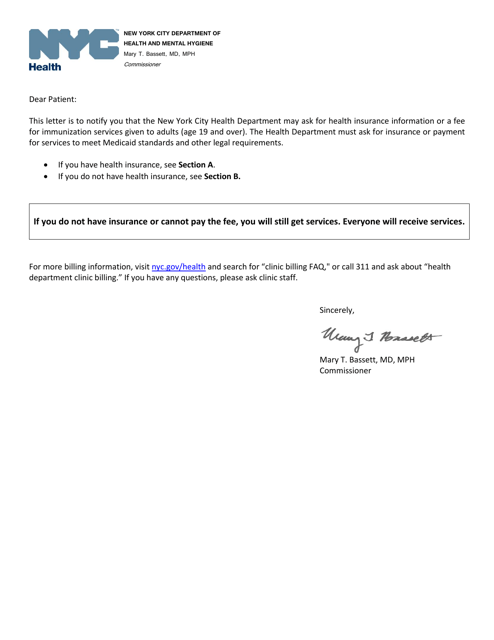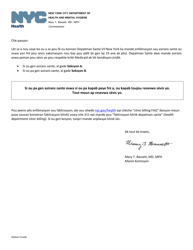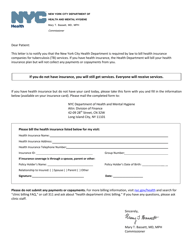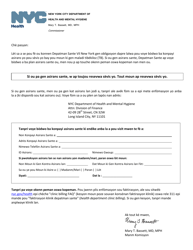Notification Letter and Sliding Scale - New York City
Notification Letter and Sliding Scale is a legal document that was released by the New York City Department of Health and Mental Hygiene - a government authority operating within New York City.
FAQ
Q: What is a notification letter in New York City?
A: In New York City, a notification letter is a document sent to tenants informing them about any changes in their rent or lease terms.
Q: What is a sliding scale in New York City?
A: In New York City, a sliding scale refers to a rent calculation method where the rental amount is based on a tenant's income and expenses.
Q: When are notification letters typically sent in New York City?
A: Notification letters in New York City are usually sent at least 30 days before any changes take effect.
Q: What information is included in a notification letter in New York City?
A: A notification letter in New York City typically includes details about the change in rent, lease terms, and any additional requirements or conditions.
Q: Who is responsible for sending notification letters in New York City?
A: The landlord or property management company is responsible for sending notification letters to tenants in New York City.
Q: What is the purpose of a sliding scale in New York City?
A: The purpose of a sliding scale in New York City is to ensure that low-income tenants are able to afford their rental units based on their income and expenses.
Q: Can a tenant refuse to accept changes mentioned in a notification letter in New York City?
A: A tenant has the right to refuse to accept changes mentioned in a notification letter in New York City. However, this may have consequences depending on the terms of their lease.
Q: Are notification letters regulated by any laws in New York City?
A: Yes, notification letters in New York City are regulated by the New York State Division of Housing and Community Renewal (DHCR).
Form Details:
- The latest edition currently provided by the New York City Department of Health and Mental Hygiene;
- Ready to use and print;
- Easy to customize;
- Compatible with most PDF-viewing applications;
- Fill out the form in our online filing application.
Download a printable version of the form by clicking the link below or browse more documents and templates provided by the New York City Department of Health and Mental Hygiene.







